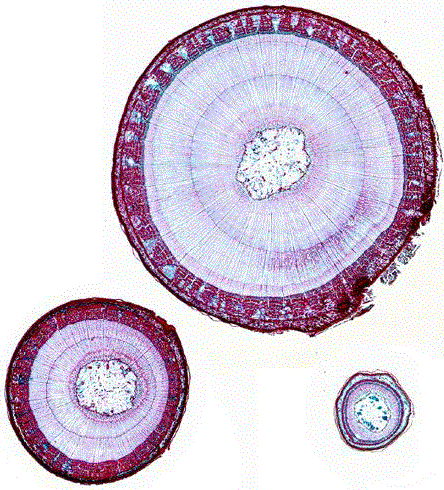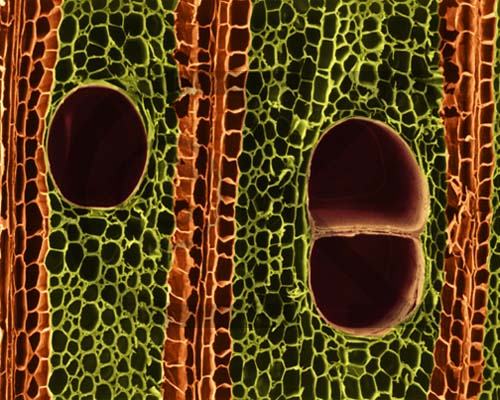The tissue responsible for producing secondary structures in the dicots and monocots is called as cambium. The secondary growth is observed in xylem, phloem as secondary xylem and secondary phloem respectively. The “cork” tissue formation also comes under secondary growth. The cork cells that are generated by the cork cambium exist as part of epidermis. The cork constitutes the bark region of the trunk of the woody plants.
The secondary growth occurs in dicots due to the vascular cambium. The vascular tissues are distributed in the entire cylinder around the plant. First, the cambium is spread to the entire cylinder and the secondary tissues are produced on either side of it. The secondary xylem is produced towards the inside while the secondary phloem is produced towards the outside of the cambium. The recently generated tissues will lie adjacent to the cambium while the matured tissues will move away from center.
After the vascular tissues are grown to a certain extent in the particular season, they stop growing and form a vascular ring. The vascular ring is formed every year seasonally and they are also called growth rings or annual rings.
The secondary growth is not observed to be present in the monocots. There are some exceptions like bamboo, palm and etc. But, the secondary growth seen in some monocots appears to be different from the way it occurs in dicots. The new vascular bundles are seen to be formed at the stem periphery. The vascular bundles are very close to one another and tend to provide support to the plant.


No comments:
Post a Comment